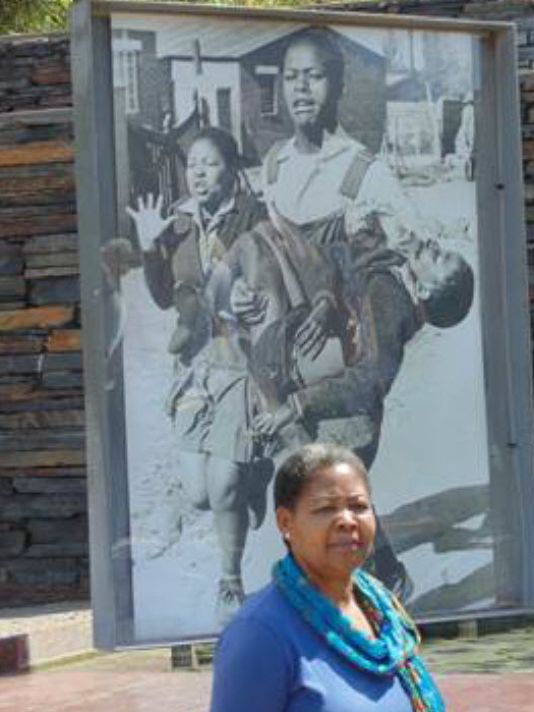SOWETO — It was an image that helped change the world.

The iconic photo showed a 12-year-old boy, Hector Pieterson, who’d been shot by South African police during a student protest. His limp body was in the arms of a fellow student; running alongside was Hector’s distraught sister, Antoinette.
The picture — taken 40 years ago Thursday by Sam Nzima, a photographer for The World newspaper, and flashed around the world — brought home the brutality of the racist apartheid system in a way that words alone could not.
Today, the Hector Pieterson Museum stands a few blocks from where the boy was shot in this township southwest of Johannesburg. The girl in the photo, now Antoinette Sithole, works as a guide and speaker at the museum, where I met her during a visit here this spring.
Four decades later, she tells the story of that awful day with heartfelt intensity but without bitterness. The students of Soweto were upset at a new policy requiring them to be taught in Afrikaans — which they considered to be the language of their oppressor, one of little utility outside of South Africa — in addition to English.

(Photo: Bill Sternberg)
They decided to protest but didn’t want to alarm their parents. The younger students, such as Hector, weren’t supposed to be part of the demonstration. “But because it was a peaceful march, and we needed the numbers, we just let them join in,” Antoinette recalled. The police arrived. The confrontation grew violent. Hector was killed. Nzima’s photo roused anti-apartheid sentiments around the world.
The Soweto uprising spawned other protests and international economic boycotts that ultimately pressured the white South African government to release Nelson Mandela from prison and paved the way toward one-person, one-vote democracy. (June 16, the date of Hector’s death, is commemorated as National Youth Day.)
The bad news in today’s new South Africa is that President Jacob Zuma of the African National Congress, the party of Mandela, presides over an administration plagued by corruption and cronyism.
The good news is that people of all races care deeply about their young democracy, which features an independent judiciary and a vibrant press that is far freer than the one that photographer Nzima was part of 40 years ago.
After taking the picture of Hector, Nzima hid the film in his sock to prevent it from being confiscated by authorities. He and his editors decided to publish the explosive image, even though they knew it would enrage the government.
That brave act of photojournalism forever altered the trajectory of South Africa, a beautiful country with an ugly past.
Bill Sternberg is the editor of the editorial page.

Leave a Reply